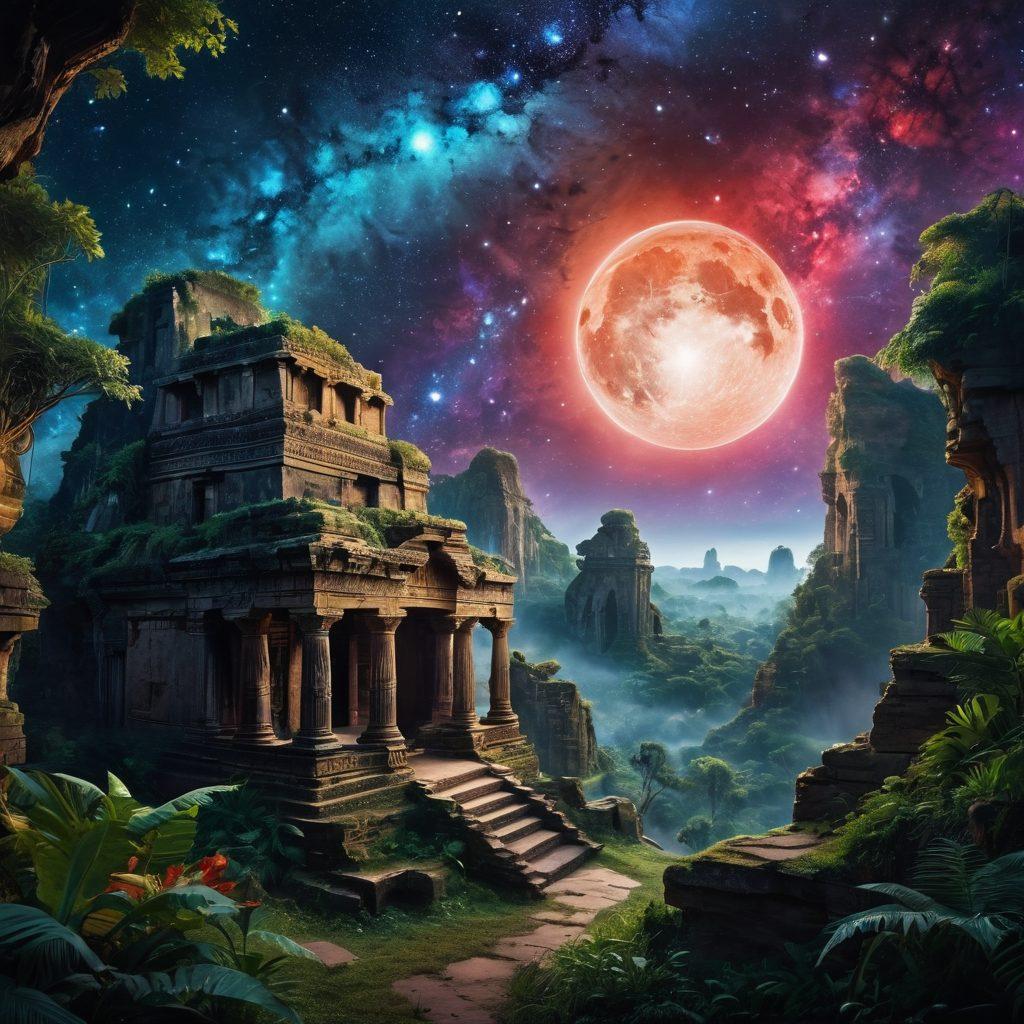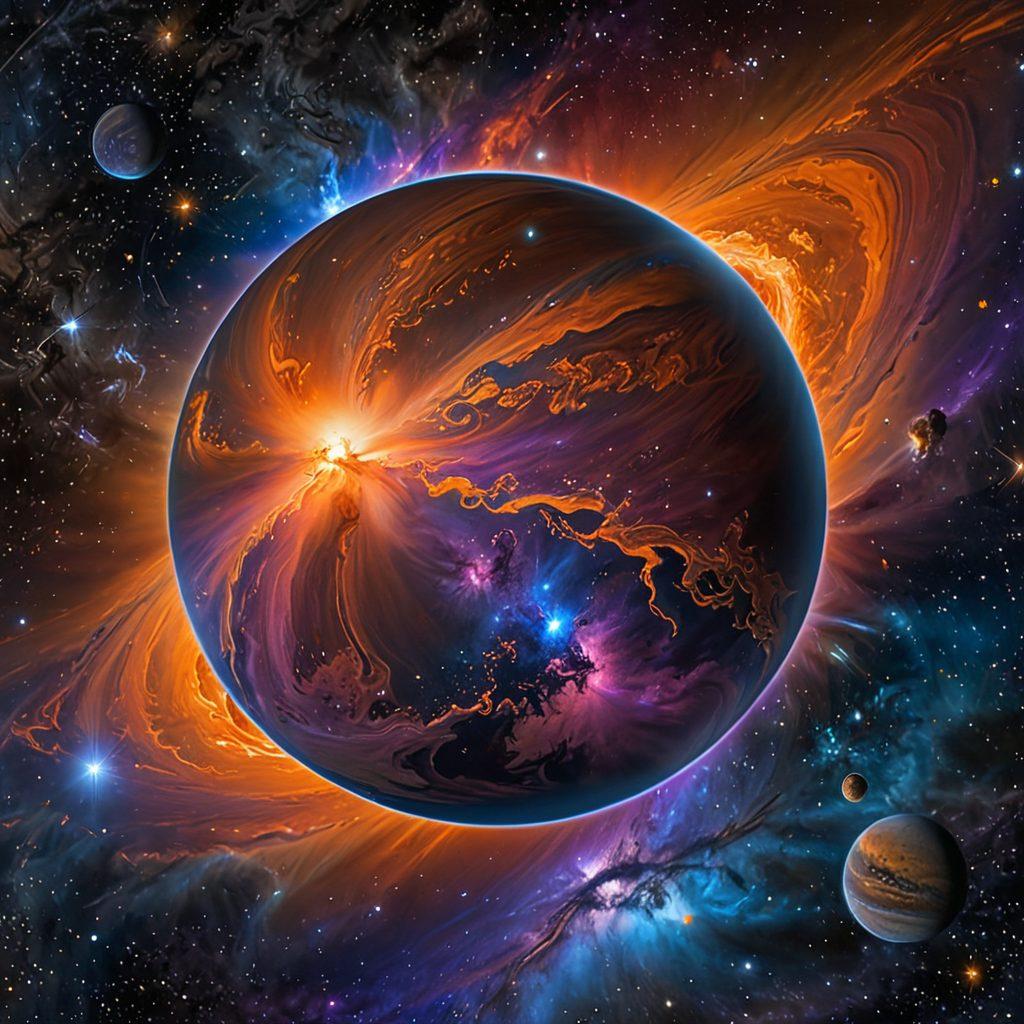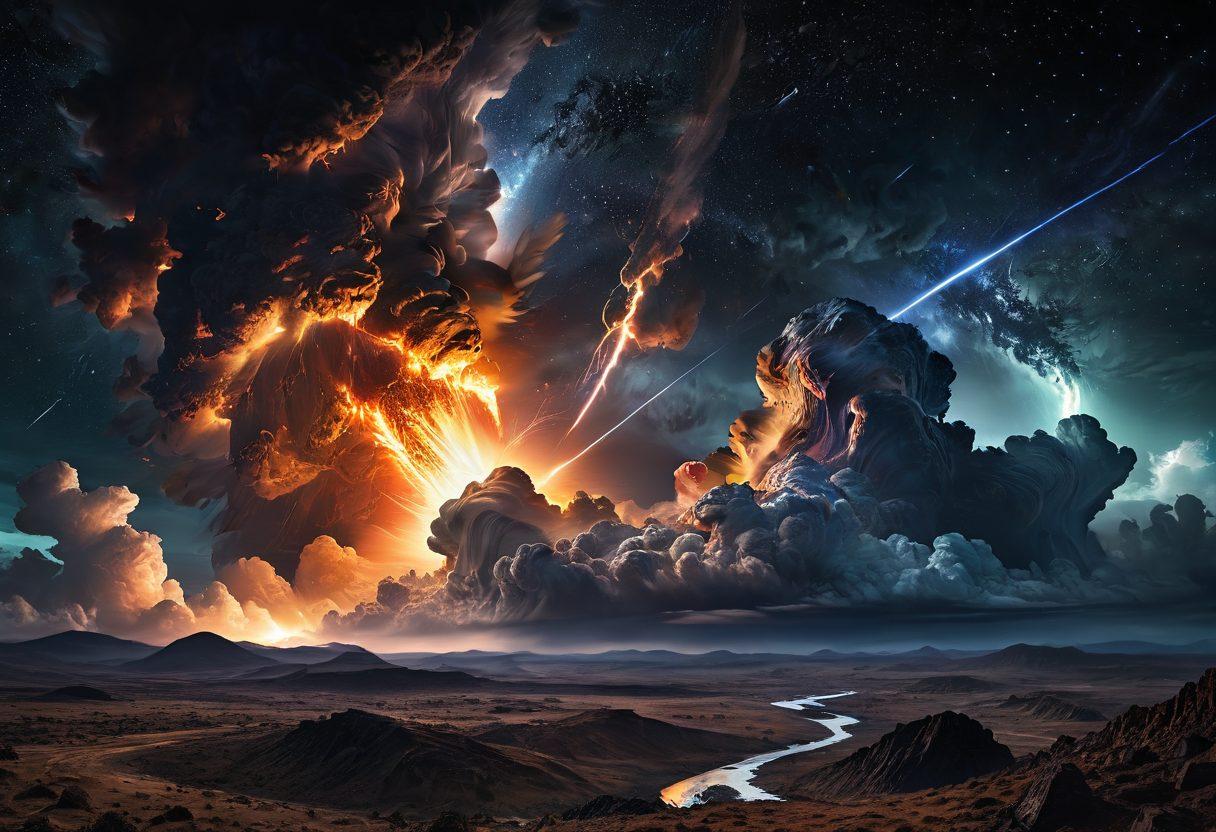Unraveling the Mysteries of Nibiru: What Ancient Civilizations Knew About Planet X and Its Apocalyptic Secrets
Have you ever gazed at the stars and wondered if they hold secrets about our future? The fascination with celestial objects has captivated humanity for centuries, and Nibiru, the infamous Planet X, stands at the forefront of these cosmic mysteries. Ancient civilizations, especially the Mayans, left clues and prophecies that appear eerily relevant today. But what exactly do they tell us about Nibiru's cosmic role and its potential impacts on our Solar System? Let’s embark on a journey through time, exploring ancient prophecies and the enigmatic Mayan calendar, piecing together the clues of this hypothetical planet's significance in our universe.
The ancient Mayan calendar is often discussed in the context of apocalyptic events and cosmic phenomena. Some enthusiasts assert that the Mayans had an extraordinary understanding of astrophysics and planetary science, and that their calendar was more than just a timekeeping device—it was a cosmic roadmap. For instance, the infamous December 21, 2012, date is often linked with predictions of disaster. Was it merely a rounding error in ancient astronomy, or is there a deeper significance that connects it with the potential orbit of Nibiru? Let’s unravel this intricate narrative and see if there’s a thread that ties these ancient insights to modern astrophysics.
Many scientists dismiss the Nibiru Cataclysm as a mere myth, suggesting that the idea of a brown dwarf—an elusive celestial object—lurking in our Solar System is unfounded. Yet the shared tales of ancient civilizations create a compelling argument in favor of inquiry. The Sumerians, Aztecs, and, of course, the Mayans all seemed to have knowledge of something beyond our ordinary understanding of celestial bodies. Could this reflect the visit of extraterrestrial forces, or perhaps it signifies humanity's age-old attempt to chart the stars and fathom their significance? While skeptics may roll their eyes, the stories we tell of our universe can reveal much about the cultures that shaped them.
The Mayan calendar’s cyclical nature hints at rebirth and renewal, contributing to the lore surrounding Nibiru as a harbinger of destruction. What if these ancient prophecies were warnings, not merely of doom but of transformation? There's a quote by the Mayan elder Don Alejandro in the documentary '2012: Time for Change' that resonates powerfully: "Change is the only constant in the universe." As we consider the Nibiru narrative intertwined with the Mayan calendar, one must ponder: are we, as a society, ready for this change? Have we learned from the cosmic events of our past to prepare us for what lies ahead?
The dialogue surrounding Planet X and celestial dangers tends to polarize opinions. For some, Nibiru serves as a compelling source of fear, while for others, it ignites curiosity and a desire for exploration. As we familiarize ourselves with the rich tapestry woven by ancient civilizations, we find that every prophecy, every calendar cycle, serves as an invitation for conversation. It challenges us to engage in planetary science and astronomy with a fresh perspective. Instead of fearing the cosmic unknown, let’s embrace it—explore the mysteries of the universe, question the narratives of old, and discover what truths may lie beyond the stars. After all, aren't we all searching for signs in the universe to help navigate our journey through life?
Astrophysical Insights: Understanding the Brown Dwarf Mystery in Our Solar System
In the ever-expanding cosmos, there exists an enigma that stirs curiosity and debate among both scientists and enthusiasts alike: the mysterious Nibiru. Often referenced in the context of apocalyptic predictions, Planet X occupies a unique space within both ancient lore and modern astrophysics. This brown dwarf, a celestial object theorized to dwell in the shadows of our Solar System, is believed by some to be tied to both ancient civilizations' astronomical knowledge and the chaotic cosmic phenomena that could lead to cataclysmic events on Earth. But is Nibiru merely a myth, or is there substantial evidence that points to its existence? Let's dive deeper into the astrophysical insights surrounding this controversial hypothetical planet.
The quest to uncover the truth about Nibiru often leads us to explore the intricacies of brown dwarfs. These intriguing cosmic bodies, larger than planets yet smaller than stars, possess a unique ability to elude traditional observations. In fact, while our astronomical instruments have provided glimpses of distant galaxies, the elusive nature of a brown dwarf leaves many questions unanswered. You might wonder, as did the scholars of ancient civilizations, how did they perceive the movements of such a significant celestial object? Was it mere coincidence that the Mayan calendar—famed for its precision—foretold cycles that some now interpret as warnings of the Nibiru Cataclysm?
Engaging with the narratives of ancient civilizations reveals a fascinating tapestry of astrological interpretation that encapsulated the cosmic wonders they observed. These early societies were keen astronomers, and their records may provide essential insights into the darker aspects of Planet X. Consider this: what if their detailed observations of the skies were not just artistic endeavors or myths but legitimate documentation of cosmic events? The ancient Mesopotamians, for instance, meticulously charted the heavens, perhaps hinting at their awareness of Nibiru long before it became a subject of contemporary discussion. Is it possible that historical texts carry the weight of knowledge lost to time?
As we stand at the intersection of astronomy and astrobiology, it prompts us to reflect on the implications that the discovery of such a celestial object might hold for our understanding of the Solar System. The Nibiru Cataclysm theory suggests an impending confrontation with catastrophic events caused by the orbit of Planet X; however, it’s crucial to approach these space theories with a balanced perspective. Astrophysics teaches us that the dynamics of our cosmic neighborhood are ever-evolving. Each new finding in planetary science could either reinforce or dismantle existing narratives surrounding Nibiru, prompting us to seek clarity in the fog of speculation. Do you believe that our fascination with Nibiru is merely a reflection of humanity's innate fear of the unknown?
In conclusion, the captivating mysteries of Nibiru and the associated brown dwarf phenomena culminate in a powerful narrative that blends ancient wisdom with contemporary inquiry. As our understanding of the universe deepens through advances in technology and research, we must ponder the possibility that significant truths lie within the myths of yesteryear. The cosmos holds an unpredictable charm, and while some may dismiss Nibiru as mere folklore, the stories of ancient civilizations beckon us to look up in wonder and curiosity. As you reflect upon this celestial mystery, consider the current implications and potential discoveries that could reshape our understanding of space and time. Are we ready to embrace the cosmic revelations that await us?
Planet X and the Nibiru Cataclysm: Are We on the Brink of Apocalyptic Events?
In the depths of our shared history, ancient civilizations left behind whispers of cosmic secrets, knitting legends and prophecies into the very fabric of human comprehension. Among these fantastic tales, one particularly provocative concept continues to captivate our imaginations: Planet X, or more commonly known as Nibiru. For those who’ve ever stared into the night sky and pondered the mysteries that lie beyond our atmosphere, the idea of celestial objects impacting our existence isn’t just a distant fantasy; it’s a looming question that raises alarm bells in the realms of astrophysics and planetary science. Are we, in fact, on the brink of apocalyptic events arising from the Nibiru Cataclysm?
Take a moment to consider this: What if the legends about Nibiru are not merely fabrications of myth, but whisper truths from the past? The Mayan Calendar famously depicts periods of great upheaval and transformation, hinting at astronomical alignments that coincide with shifts in human history. Ancient civilizations, including the Sumerians, spoke of a mysterious brown dwarf lurking on the edges of our solar system. Is it possible that these long-gone cultures possessed knowledge of cosmic phenomena that we are just beginning to grasp? As we delve into the mysteries surrounding Planet X, it’s imperative to ask ourselves — could history be repeating itself?
Indeed, comprehending the potential dangers of Planet X and the Nibiru Cataclysm requires us to navigate through space theories that challenge our current understanding of astronomy. In a universe filled with celestial objects swirling in their orbits, the thought of a hypothetical planet wreaking havoc is both thrilling and terrifying. But how does a brown dwarf fit into this narrative? Such a dense and dim star has a gravitational pull potent enough to disrupt asteroid belts and even influence the dynamics of our own planets. Are we equipped to face these revelations about the cosmos?
What can we, mere mortals, do with this information if Nibiru were to become a tangible threat? The awareness of these apocalyptic events can empower us to better understand our world and the universe beyond. We can channel our curiosity into further exploration of planetary science, educating ourselves and our communities about the potential risks of cosmic disturbances. After all, apocalyptic scenarios feature not only doom and gloom; they remind us of humanity’s resilience and our unyielding strive for knowledge. How do we respond to the fears instilled in us by the legends of Nibiru?
So, as you gaze up at the night sky, remember that we are part of an incredibly complex and dynamic celestial dance. While the specter of the Nibiru Cataclysm might evoke trepidation, let’s also harness that unease to foster a sense of urgency to broaden our understanding of space, encourage conversations on cosmic phenomena, and seek ways to prepare our planet for whatever the universe may throw our way. The expedition of knowledge is a powerful shield in this vast cosmic arena — will you join the journey?


